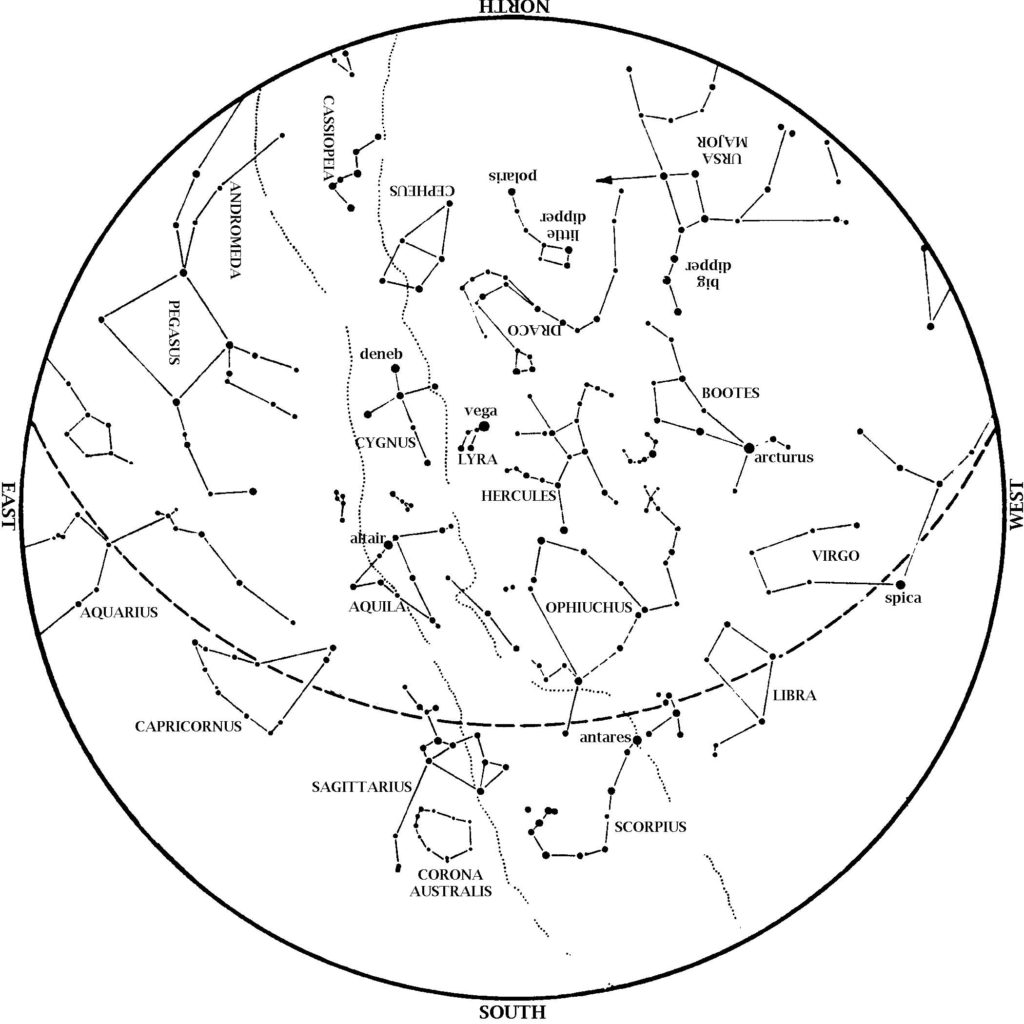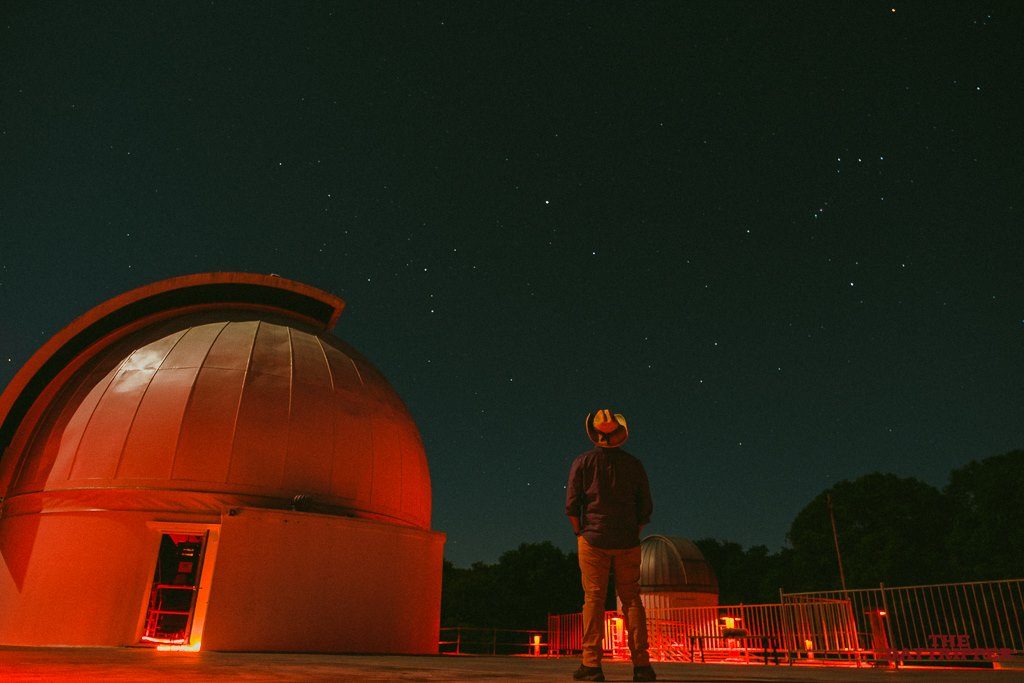
The Summer Triangle is high overhead. This consists of the brightest stars in Cygnus, Lyra, and Aquila. Scorpius, the Scorpion, is in the south, with the ‘teapot’ of Sagittarius to his left. From the Big Dipper’s handle, ‘arc to Arcturus’ and ‘speed on to Spica’ in the southwest. Jupiter, above Scorpius, and Saturn, in Sagittarius, are in the south at dusk. The Great Square of Pegasus rises in the east, heralding the coming autumn.
Jupiter remains in the evening sky, well placed for observing. Look low in the south at dusk for the brightest thing there.
Saturn is also in the evening sky. Although it is not as bright as Jupiter, you can find it easily at some distance to the left of Jupiter.
Venus and Mars are lost in the Sun’s glare and out of sight this month. In fact, Venus is exactly on the far side of the Sun from us on August 13. That’s called superior conjunction.

The Summer Triangle is high in the east at dusk. This consists of Deneb, Vega, and Altair, the brightest stars in Cygnus, Lyra, and Aquila respectively. Scorpius, the Scorpion, is in the south, with the ‘teapot’ of Sagittarius to his left. From the Big Dipper’s handle, ‘arc to Arcturus’ and ‘speed on to Spica’ in the southwest. The ‘teapot’ of Sagittarius to the left of Scorpius, with Saturn to the upper left of the ‘teapot’. When you face between these two constellations, you face the direction of the galactic center, which all stars in the Milky Way orbit. The Great Square of Pegasus rises in the east, heralding the coming autumn.
If you are far enough from bright city lights, you might look for the Milky Way band. This band is brightest near the galactic center and extends from there right through the Summer Triangle. In fact, every star we ever see in the sky with the naked eye is in our Milky Way. Indeed, our galaxy is so big that only stars relatively close to us appear as distinct stars; the rest of our galaxy blurs out and appears as the Milky Way band across our sky. For example, Deneb is about 1600 light years away, which ids quite far. The entire Milky Way, however, is 100,000 light years across, making Deneb one of our relative ‘neighbors’. Thus, we see our Milky Way as a blur in the background with stars like Deneb (and Vega, Altair, Arcturus, Spica, etc.) in the foreground.
Moon Phases in August 2019:
1st Quarter Aug. 7, 12:31 p.m.
Full Aug. 15, 7:29 a.m.
Last Quarter Aug. 23, 9:56 a.m.
New Aug. 30, 5:37 a.m.

The annual Perseid Meteor Shower peaks this year on the night of August 12-13. Note that that is the peak night; some meteors are visible up to two weeks before and after, if not as many as on the peak night. At its best, this shower produces on average one or two meteors per minute. One minute can be a long time if you’re waiting for something to happen. Consider also that this is an average; some minutes may have zero while others have more than two. Unfortunately, the this night is only two days before the Full Moon, which will hide all but the very brightest meteors. To see as many meteors as you can, keep in mind that the shower gets better as the night wears on, and is best in early morning hours. That’s because Earth is running into the meteors rather than the other way around; the leading edge of the Earth—the side going from night to day—faces into the meteor stream. Also, any bright lights will hide dimmer meteors, so get as far away from the big city as you can for the best view.

George Observatory is closed for renovations until further notice. However, beginning August 10, we will have our weekly Saturday night observing in the Nature Center parking lot in Brazos Bend State Park.
Would you like email updates on current events in the sky, at the planetarium, and at George Observatory? If so, send an email to astroinfo@hmns.org.

